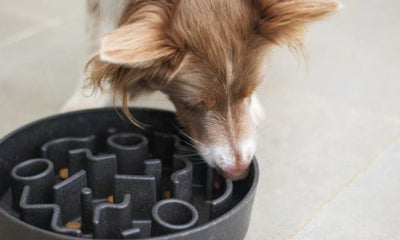Hot spots, also known as acute moist dermatitis, are a common skin condition that can cause discomfort and irritation for our beloved canine companions. These inflamed and infected areas of skin can develop rapidly, leading to itching, pain, and sometimes even hair loss. Understanding the causes, symptoms, and treatment options for hot spots is essential for providing relief and promoting healing for our furry friends.
What are Hot Spots?
Hot spots are localised areas of inflammation and infection on a dog's skin. They typically appear as red, moist, and often painful lesions that may ooze pus or discharge. Hot spots can develop anywhere on the body but are most commonly found on areas with dense fur, such as the neck, hips, and limbs.
Causes of Hot Spots
Several factors can contribute to the development of hot spots in dogs, including:
- Allergies: Environmental allergens, food allergies, or flea allergies can trigger itching and scratching, leading to hot spot formation.
- Parasites: Flea infestations or tick bites can irritate the skin, prompting dogs to scratch and lick excessively, which can result in hot spots.
- Moisture: Damp fur, swimming, or excessive licking can create a moist environment conducive to bacterial overgrowth, increasing the risk of hot spot formation.
- Skin Infections: Underlying skin conditions, such as dermatitis or seborrhea, can compromise the skin's barrier function, making dogs more susceptible to hot spots.
Symptoms of Hot Spots
- Redness and inflammation
- Moist or oozing lesions
- Intense itching and scratching
- Hair loss or bald patches
- Pain or discomfort
- Foul odour (in severe cases)
Treatment of Hot Spots
- Trimming and Cleaning: Trim the fur around the affected area to allow air to reach the skin and prevent further moisture buildup. Clean the hot spot with a mild antiseptic solution or prescribed medicated shampoo.
- Topical Treatments: Apply a veterinarian-recommended topical medication or spray to reduce inflammation, soothe itching, and promote healing. Avoid using products containing alcohol or steroids, as they can further irritate the skin.
- Oral Medications: In some cases, veterinarians may prescribe oral antibiotics or anti-inflammatory medications to treat underlying bacterial infections and relieve pain and inflammation.
- Identifying and Addressing Underlying Causes: Work with your veterinarian to identify and address any underlying factors contributing to hot spot development, such as allergies or parasites. Implementing flea control measures, dietary changes, or environmental modifications may be necessary to prevent recurrence.
Preventing Hot Spots
- Regular grooming and hygiene maintenance
- Addressing underlying skin conditions promptly
- Implementing flea and parasite prevention measures
- Providing a balanced diet and appropriate nutrition
- Minimising stress and environmental triggers
If your dog's hot spots are severe, widespread, or not improving with home care, it's crucial to seek veterinary attention promptly. Your veterinarian can perform a thorough examination, determine the underlying cause of the hot spots, and prescribe appropriate treatment to alleviate your dog's discomfort and promote healing.
Hot spots can be a source of discomfort and frustration for both dogs and their owners, but with prompt intervention and proper care, most cases can be effectively managed and resolved. By understanding the causes, symptoms, and treatment options for hot spots, pet owners can take proactive steps to protect their furry friends' skin health and well-being.






